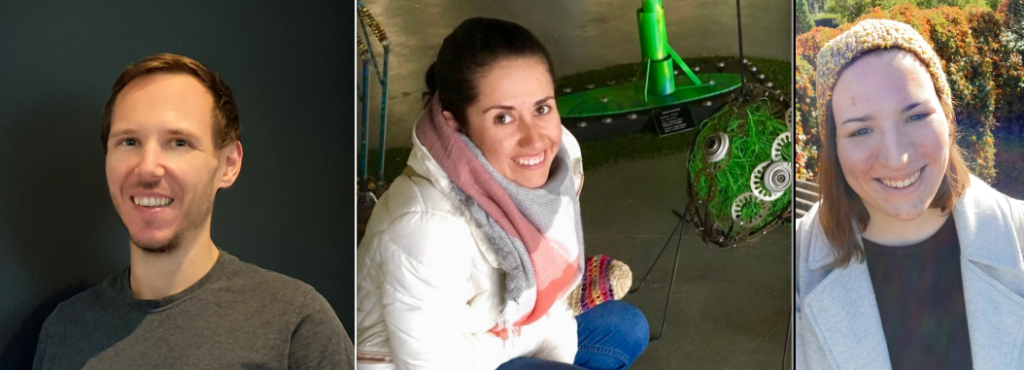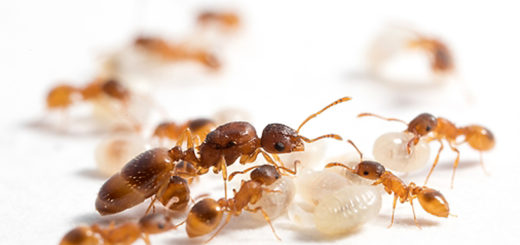Always keep your samples in a freezer

In the study “Variable viral loads and immune response in an invasive ant’s native and introduced ranges” published in Diversity and Distributions, Felden et al.* investigate the role of pathogens in biological invasions, focusing on the invasive Argentine ants. The authors specifically focused on virus load in native and invasive populations. They found that five viruses had higher loads in Argentine ants, especially in introduced populations. Here, first author Antoine Felden highlights the main points of the study.
*= Antoine Felden, James W. Baty, David G. Chapple, Monica A. M. Gruber, John Haywood, Carolina Paris, Andrew V. Suarez, Neil D. Tsutsui, Philip J. Lester
An Interview compiled by Patrick Krapf, Lina Pedraza, Beatriz Portinha

MNB: Could you tell us a bit about yourself?
AF: I’m the product of a publicly funded education system that gave me the opportunities to explore science and myself. Throughout my early academic career, I was supported by free education, travel grants, student allowance and benefits that allowed me to get involved with research early on. I am grateful for this support, which eventually led me to land a PhD scholarship at Te Herenga waka – Victoria University of Wellington in Aotearoa. At the polar opposite of where I was born, the university’s School of Biological Sciences has truly been a mooring point. Almost ten years on, from research grant to research grant, and in close collaboration with Phil Lester, I’m still developing an ever-deeper relationship with my home and workplace. I’ve diverged a bit from my initial obsession with ants, and I am now mostly involved with honeybee research, as well as teaching at university.
MNB: Could you briefly outline the research you recently published in layman’s terms?
AF: It’s a survey of viral communities in Argentine ant populations worldwide, combined with gene expression for many immune response genes covering the main immunity signaling pathways. We were asking questions about the eco-immunology of invasive ants: how do they manage pathogens in these large, dense groups that make up supercolonies? Do they escape their natural pathogens, or do they pick some up on the way? There are ideas around invasive species tolerance to generalist pathogens that may help them through spillover to native populations. Using a global dataset, those are the questions I wanted to explore.

MNB: What is the take-home message of your work?
AF: Eco-immunology is tricky to study as variation depends on so many factors – I’d say that our work adds to the body of data that will eventually reveal its patterns. There is an ‘off’ message though, always keep your samples – you never know! We initially collected this sample set in 2015 for an unrelated behavioural study, and we managed to repurpose it for new biological questions almost seven years later.
MNB: What was the biggest obstacle you had to overcome in this project?
AF: The data analysis was full of surprises. Thanks to our resident statistician John Haywood, I had the chance to dive deep into the dataset and into how to best be able to understand it. I find it fascinating how the more you look at a dataset, the more you’re able to extract meaningful interpretations from it. Data analysis is akin to a relationship: first, you’re really excited about what you think it will look like. Then, you realize that there are some problems with it (it is not normal, there are missing values, you’re not sure if that outlier is really an outlier…) but methodically working through the kinks of it, you get to find the right statistical approach to move forward.
MNB: Do you have any tips for others who are interested in doing related research?
AF: Collaboration is key. None of this work would have been possible without the local expert knowledge and hospitality in the different regions we collected samples from.
MNB: Where do you see the future for this particular field of ant research?
AF: Invasive species are one of the main threats to biodiversity, and there is still a lot to understand about how biological invasions interact with eco-immunology. Popular theories such as the ‘Enemy release hypothesis’ have received a large amount of interest, yet empirical data does not always support this idea. The theory that invasive ants may have evolved increased tolerance to pathogens, promoting their dominance over more susceptible native ants, is exciting, and needs to be explored further!






Recent Comments